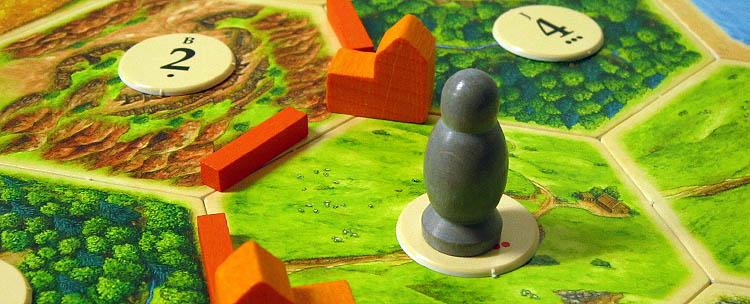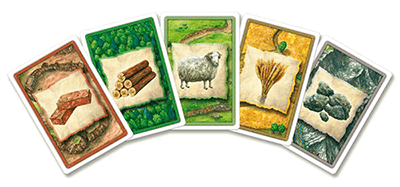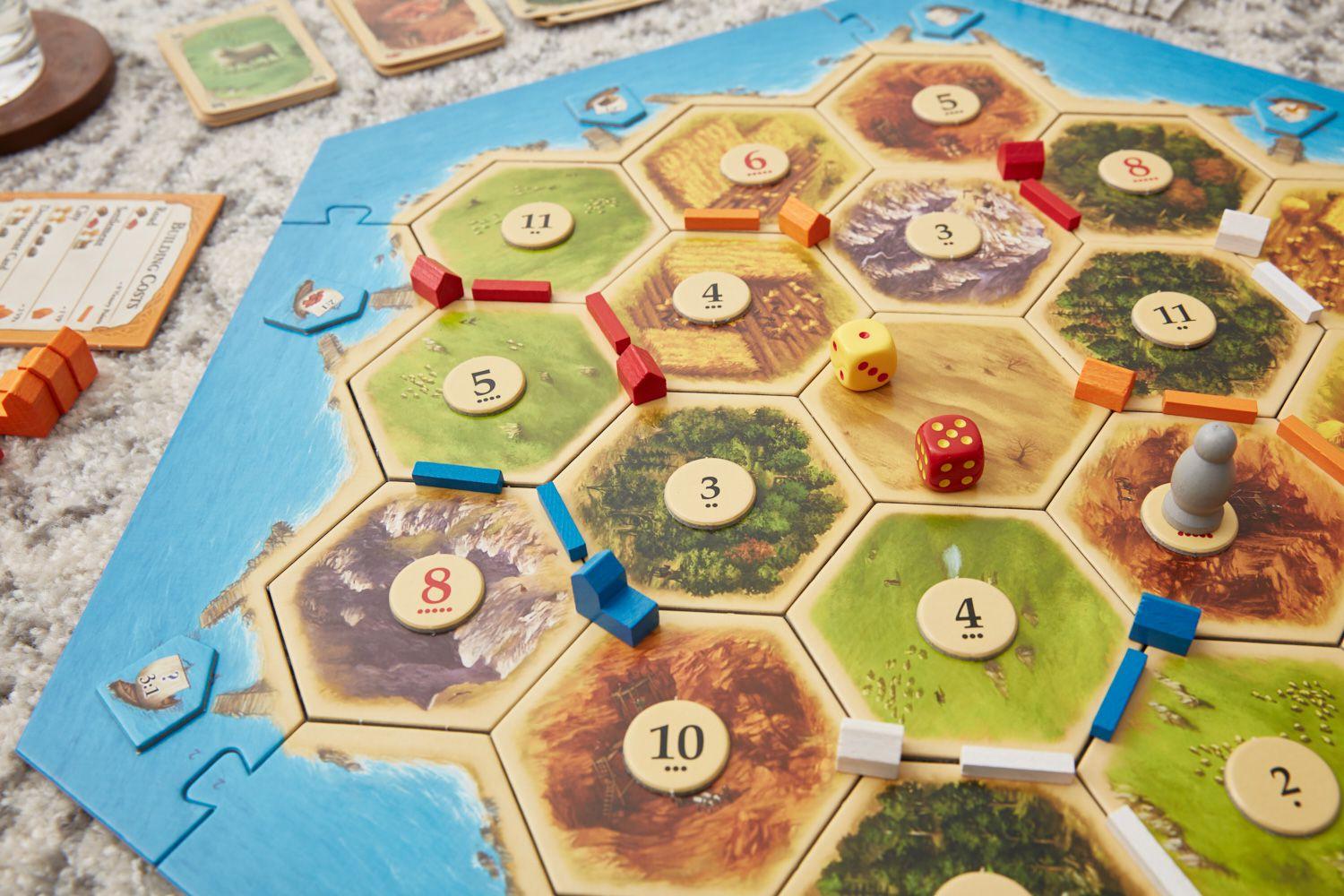I played Settlers of Catan created by Klaus Teuber with my friends. The target audience seems to be for 8+. The objective of the game is to try to be the first to gain 10 points through building settlements (1 point), cities (2 points), and/or getting certain achievements like building the longest road (2 points). This zero-sum game can be played with up to 6 players and is player vs player. There are several rules to the game, but the main ones are that you cannot build a road right next to someone else’s road, and any settlement must be two road-lengths away from any other settlement. Players can also buy roads, settlements, cities, and development cards with their resources. For procedures, each player roles the dice in the beginning and whoever rolled highest gets to choose where to put their first road and settlement, and then the other players do the same. Then, going in reverse order, the players put down their second settlement and road. For the rest of the game, players take turns rolling the dice and the numbers on the dice will then correspond to tiles on the board. All players who have a settlement touching a corner of that tile gets one of that resource, and if a player has a city touching it, then they get double. An important rule is that if any player roles a 7, then any player that has more than 7 cards in their hands must discard half of their cards. There is also a “robber,” who starts out on the desert tile. Whoever rolled the 7 can move the robber to a tile, and then if that tile’s number is rolled, then the players with settlements/cities touching that tile do not get resources. Also, when the robber is moved, if any other player has a settlement/city touching that tile, then the player who moved the robber takes one card at random from one of the players.

Players are also allowed to trade resources among themselves when it is one trading party’s turn. They can also buy resources from the bank. Settlements/cities that are touching ports allow players who own those settlements/cities to trade according to that specified ratio. Settlements can be upgraded to cities, and roads must be placed adjacent to one’s other roads or settlement/city. Conflict may arise from other players placing settlements where you were planning to, or from placing the robber on a tile touching your settlement. The boundary is the board of the game and the cards, and the resources include brick, ore, wool, lumber, and grain to buy and trade things.

Challenge and fellowship are the main types of fun intended. I think the game met these goals, because there are challenges to work towards like building the longest road, and the overall challenge of getting to 10 points first to win the game. Additionally, there is fellowship in the sense that players can sometimes help each other (and bond) by trading. Moments of success included when I got to pick up many resources for multiple rounds, because of the way I placed my settlements. One epic fail was when I had more than 7 cards in my hand, and someone rolled a 7 so I had to discard half of them.
To make the game better, I think I would implement more skill-based resource-gain. I felt like a lot of the game relied on chance (rolling the dice), even though players got to decide where to place settlements. Additionally, players who did well in the beginning were able to do better exponentially as the game went on, and I wish that there was a better way to counteract this other than the rule of discarding half of one’s cards if one has more than 7 resources and someone rolls a 7.
The four types of game balance include balance in single-player games, balance in asymmetric games, balance between strategies in a game, and balance between game objects. Balance in single-player games doesn’t really apply here, since Settlers of Catan is not single-player. Balance in asymmetric games relates to my experience in the sense that players may start off slightly asymmetrically, because certain positionings may turn out to be more advantageous depending on the later dice roles. Certain players, for example, may not be able to get a certain resource easily because of where they initially placed their settlements. I think the game does a decent job of trying to balance this out, because players still have the option to trade with other players and the bank, as well as build near ports. In terms of balance between strategies in a game, one popular strategy is to build early on, so that one can have an easier time accumulating resources. Another strategy is to hoard resources initially, but I think the game does a good job of steering players away from this by making the rule that all players with more than 7 resources in their hands must discard half of them if someone rolls a 7. Lastly, for balance between game objects, this is most relevant to the resource cards. I think in general, there is a good balance between the resources, but it is hard to tell which resource is “best,” since you need at least two types of some resource to buy anything, which is an effective way to equalize the resources in my gameplay experience.
There are three ways to balance game objects – transitive, intransitive, and fruity. In terms of the transitive relationship, it is not clear which resource might be “better” than another resource. They seemed all relatively equal when I was playing, but I did like the fact that players could trade any 4 of a kind of a resource for 1 resource of a different kind from the bank. For the intransitive relationship between resource units, no one resource is “inferior” or “superior” to another, but at certain parts of the game for certain players, some resources might be seen as more valuable, because they may not be able to gain access as easily to those resources. For example, it was easy for me to get grain, but hard for me to get brick, because of where I set up my settlements, and so brick might be seen as rarer and more valuable to me specifically. Lastly, the fruity relationship between resources I think is applicable here, because each resource is different conceptually, and the value of the resource itself varies for every specific instance of the game and player. Additionally, the development cards are so different that it is hard to say which is better or worse than another one.



